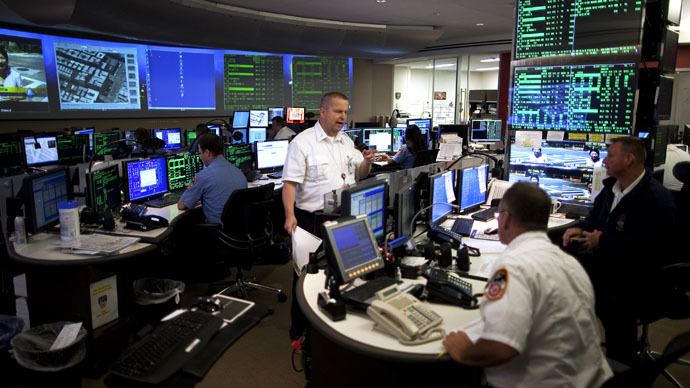Florida police used warrantless 'Stingray' surveillance over 1,800 times

Law enforcement officials in Florida have used ‘Stingray’ surveillance to track cell phone locations on more than 1,800 occasions, according to the American Civil Liberties Union (ACLU). And they did it without obtaining warrants.
The discovery was made after the ACLU fileda public records request with over 30 Florida law enforcement agencies in 2014 to find out how police were using surveillance tools to track down cell phone users.
A May 2014 email obtained by the ACLU shows the equipment, commonly known as ‘Stingray’ after a popular brand, was used over 1,800 times – often in robbery, burglary, and theft investigations. However, not a single investigation was related to national security.
ACLU-Obtained Documents Reveal Breadth of Secretive Stingray Use in Florida https://t.co/o4jpXrDR9s#privacy#surveillance
— Muslim Legal Fund (@MLFA) February 23, 2015
The Stingray tool, also known as a “cell site simulator,” can mimic cell phone towers and force phones in the area to broadcast information that can be used to identify and locate users. The devices are small enough to fit in a police vehicle and can even be carried by hand. They can identify telephone numbers, unique identifying numbers, and the locations of all cell phones in range. They can also log the phone numbers called and texted by a connected phone.
“In many of the investigations, police never sought a court order authorizing Stingray use,” Nathan Freed Wessler, staff attorney at the ACLU Speech, Privacy & Technology Project, said in a statement.
READ MORE:US police employ radar to ‘look’ through walls - report
“In others, they sought a court order on a low ‘relevance’ standard, but not a warrant based on probable cause...[Probably] most troubling, the records indicate a pattern of excessive secrecy, including concealment of information that should appear in investigative files and court filings.”
The Tallahassee Police Department provided the most information about the agency’s use of Stingrays. Wessler said that in more than 250 investigations over a seven-year period, not one of the court filings contains a single mention or description of Stingray technology. Instead, a filing might refer to “electronic surveillance measures” or “confidential intelligence.” Wessler said this suggests that judges weren’t being fully informed about what they were approving.
READ MORE: California police spent $45mn on spy gear with little oversight
Privacy advocates aren’t pleased by the use of these devices, since they allow law enforcement to suck up huge chunks of information about potentially thousands of innocent people at once.
The ACLU’s interest in cell site simulators stems back to a 2008 rape case in which the victim said her phone was stolen in the course of a rape. Using Stingray technology, Tallahassee police were able, in 24 hours, to trace the cell phone to an apartment where they entered – without a warrant – and arrested a man.
During the trial, police would not reveal how they were able to find the man, though entering his apartment without a warrant would be a violation of his Fourth Amendment right against unreasonable search and seizure.
Other records show the Miami-Dade Police Department used the technology to carry out surveillance on protesters in 2003 at a Free Trade of the Americas Agreement conference.
“None of the records obtained show any policies or guidelines governing the use of stingrays or restricting how and when they could be deployed, suggesting a lack of internal oversight,” said Wessler.
The records request comes amid a growing awareness of unchecked surveillance being conducted by local police departments around the country.
READ MORE: FBI silently changes cell phone tracking policy
The New York Civil Liberties Union (NYCLU) was also in court recently, seeking the release of information about the Erie County Sheriff’s Office’s use of surveillance technology.
“Stingrays are not highly secret military equipment as the sheriff would have this court believe,” the NYCLU wrote in its legal brief. “They are tools used by many local civilian agencies in everyday investigations against American citizens.”
The NYCLU took legal action after the sheriff’s office denied part of the group’s request for information under the Freedom of Information Act. Sheriff’s office attorney Andrea Schillaci said disclosing the information would give away confidential law enforcement investigative techniques.
“The issue of the capabilities of the equipment is of paramount importance, not just to the local law enforcement, but to the FBI and to other national agencies,” Schillaci told the Associated Press.
The judge in the case has not yet made a ruling.
Congress is also concerned. In December, a US Senate committee sent a letter to the Departments of Justice and Homeland Security seeking answers about the use of Stingray by federal law enforcement.












